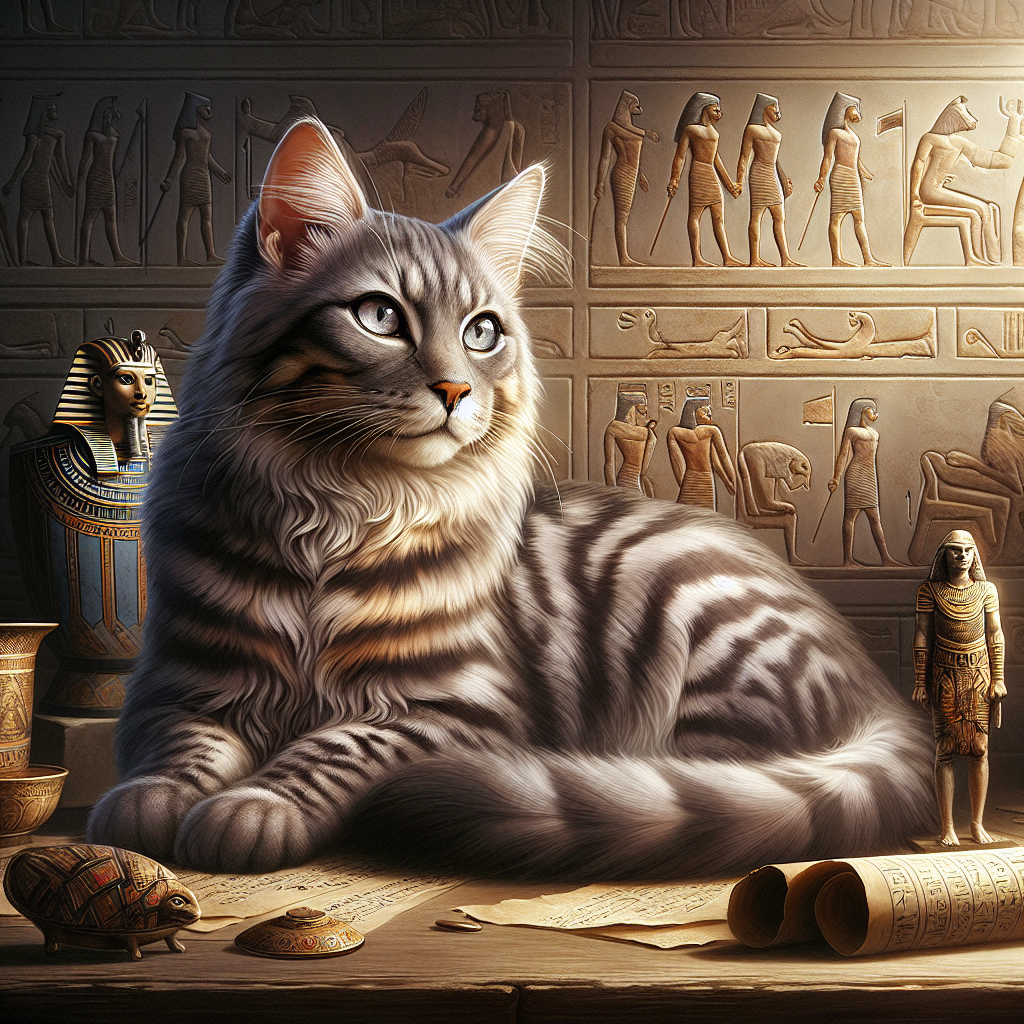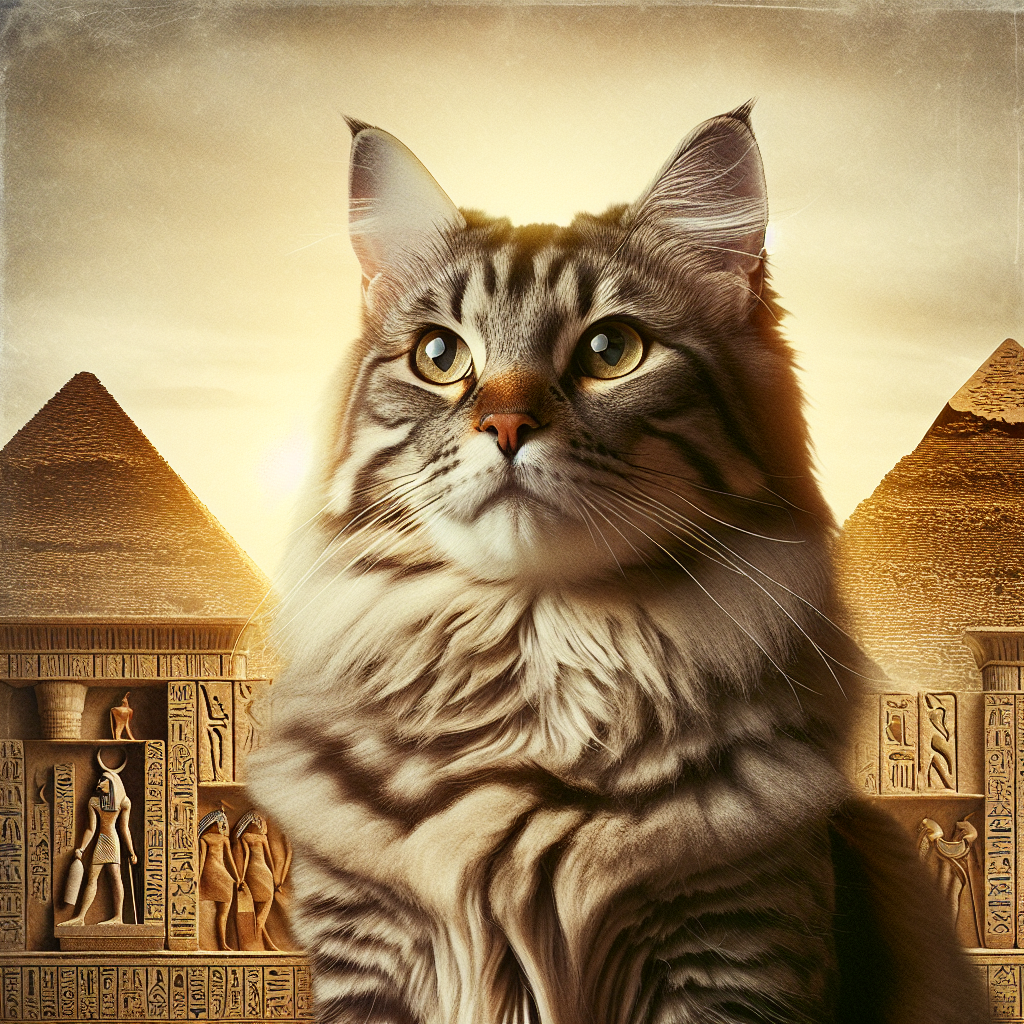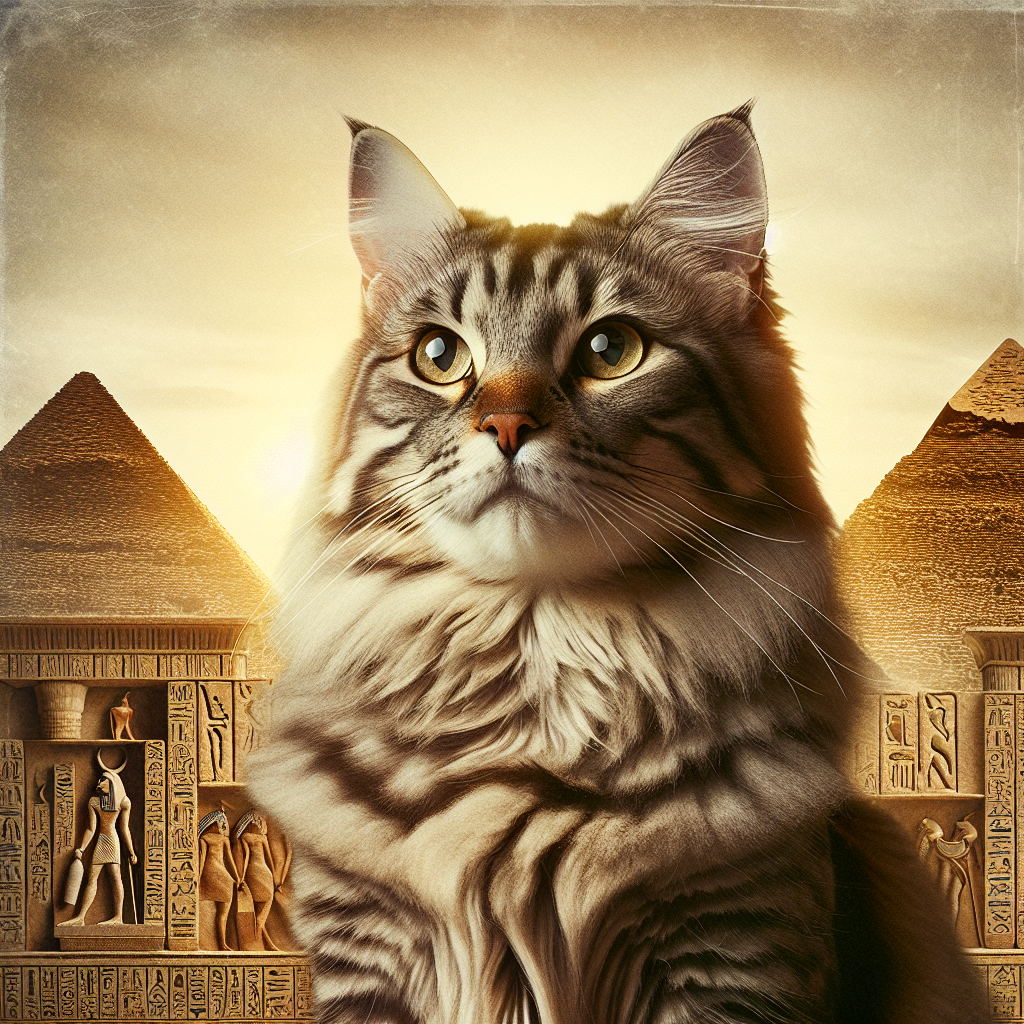Have you ever wondered where those adorable grey tabby cats come from? Well, the origins of grey tabby cats can be traced back to ancient Egypt, where they were highly revered and even worshipped. These fascinating felines were believed to have magical powers and were often depicted in ancient Egyptian art. Over the centuries, grey tabby cats spread to different parts of the world, and their charm and distinctive coat patterns continue to captivate cat lovers to this day.
Early History of Domestic Cats
Evolution of Cats
Domestic cats, including the grey tabby, have a rich and fascinating history that dates back thousands of years. The evolution of cats began around 60 million years ago, and it is believed that they descended from a common ancestor of both cats and dogs. Over time, cats developed into the unique and independent creatures that we know and love today.
Early Domestication of Cats
The domestication of cats can be traced back to ancient times. It is believed that the ancient Egyptians were among the first people to tame and keep cats as companions. These early domesticated cats served a practical purpose of controlling rodents, which were a common problem in households and agricultural settings. Through selective breeding and adaptation, different coat patterns and colors began to emerge, including the iconic grey tabby.
Genetics of Tabby Coat Patterns
Tabby Coat Patterns
Tabby coat patterns are one of the most common and recognizable patterns in domestic cats. The tabby pattern is characterized by stripes, swirls, or spots on the cat’s coat. While many cats can have tabby markings, the grey tabby is particularly renowned for its elegant and distinct appearance.
Inheritance of Coat Colors
Coat color inheritance in cats is a complex process influenced by multiple genes. The grey tabby coat color is determined by the combination of genes responsible for pigmentation. The expression of the agouti gene is primarily responsible for the tabby pattern, while other genes determine the specific shade of grey.
The Mackerel Tabby Pattern
The mackerel tabby pattern is characterized by narrow, parallel stripes that run vertically along the cat’s body. This pattern gives the cat a sleek and graceful appearance, resembling the stripes of a fish skeleton. Many grey tabbies exhibit the mackerel pattern, adding to their unique charm.
The Classic Tabby Pattern
The classic tabby pattern, also known as blotched tabby, features bold, swirling patterns and wide stripes on the cat’s coat. This pattern is often seen in grey tabbies, creating a striking and eye-catching look. The classic tabby pattern is closely associated with the traditional image of a tabby cat.
The Ticked Tabby Pattern
The ticked tabby pattern, also known as abyssinian tabby, is characterized by individual hairs that are banded with various shades of grey. This pattern creates an overall appearance of a solid coat color with a subtle hint of tabby markings. While less common in grey tabbies, some individuals may display the ticked tabby pattern.

What is a Grey Tabby Cat?
Defining a Grey Tabby Cat
A grey tabby cat, often referred to as a blue tabby, is a cat with a coat color that ranges in shades of grey, from light silver to deep charcoal. Grey tabbies typically exhibit the tabby pattern, with variations such as mackerel, classic, or ticked. This unique coloration gives grey tabby cats a sophisticated and regal appearance.
Variations of Grey Tabby Cats
Grey tabby cats can come in various shades and patterns, making each cat distinct and individual. Some may have a lighter, almost silvery grey coat, while others may have a darker, smoky grey color. The exact shade of grey can vary depending on the genetics and breeding of the cat. Additionally, grey tabbies can exhibit different tabby patterns, adding to their diverse and captivating beauty.
Ancient Origins of Grey Tabby Cats
Ancient Egyptian Connection
Grey tabby cats have a historical connection to ancient Egypt, where cats were highly revered and considered sacred creatures. Egyptian artwork and artifacts often depict cats, including tabbies, which were believed to bring good luck and protection. The grey tabby’s association with ancient Egyptian culture adds to its allure and mystique.
Grey Tabby Cats in Norse Mythology
Norse mythology also showcases the significance of grey tabby cats. In Norse folklore, Freyja, the goddess of love and beauty, is often depicted with two large grey tabby cats named Bygul and Trjegul. These cats were believed to bring good fortune and were associated with fertility and abundance. The mythical connection between grey tabbies and Norse mythology adds another layer of fascination to their history.

Medieval Times and Grey Tabby Cats
Grey Tabby Cats in Medieval Europe
During medieval times in Europe, grey tabby cats were commonly found in households, farms, and even in monasteries. People valued their ability to control rodent populations, which were a constant threat to food stores and hygiene. Grey tabbies played a vital role in maintaining cleanliness and protecting valuable resources.
Associations with Witchcraft and Superstitions
Unfortunately, the association between grey tabby cats and witchcraft emerged during the medieval period. Cats, including grey tabbies, were often considered as companions of witches or familiars and were associated with dark arts. Superstitions and fear surrounding grey tabbies led to their mistreatment and being persecuted alongside suspected witches. These unjust beliefs persisted for centuries, adding a somber chapter to the history of grey tabby cats.
Tabby Cats in the New World
Grey Tabby Cats in Colonial America
Grey tabby cats traveled to the New World along with the European settlers during the colonial era. They continued to be valued for their hunting abilities and were essential companions in the early American households and farms. Grey tabbies thrived in the new environment and left their mark on the evolving culture of America.
Grey Tabby Cats in Native American Culture
Native American tribes also revered the grey tabby cat. These cats were seen as symbols of guidance and protection, and their presence was believed to bring harmony and balance to the tribe. The close bond between Native Americans and grey tabby cats reflects the deep connection and respect for nature prevalent in their culture.
Modern Popularity of Grey Tabby Cats
Grey Tabby Cats in Art and Literature
Grey tabby cats have captured the imagination of artists and writers throughout history. Their beauty and enigmatic presence have been immortalized in numerous paintings, sculptures, and literary works. From famous paintings featuring grey tabbies to beloved characters in children’s books, these cats continue to inspire creativity and portray a sense of elegance and charm.
Famous Grey Tabby Cats
Several famous grey tabby cats have gained recognition and left an indelible mark. Morris, the beloved mascot of a well-known cat food brand, was a grey tabby whose charming personality captured the hearts of millions. Other famous grey tabby cats include notable internet sensations and movie stars who have further contributed to the popularity and adoration of these magnificent cats.
Breeds that Often Have Grey Tabby Cats
American Shorthair
The American Shorthair breed is known for its wide variety of coat colors and patterns, including grey tabby. These cats have a sturdy build and are sought after for their friendly and easygoing nature. Grey tabby American Shorthairs display the characteristic tabby patterns, adding to their allure.
British Shorthair
British Shorthair cats are known for their round faces and dense coats. Grey tabby British Shorthairs are highly sought after for their unique combination of striking appearance and affectionate personality. Their calm and gentle demeanor makes them ideal companions for both individuals and families.
Maine Coon
Maine Coon cats are one of the largest domestic cat breeds renowned for their gentle and sociable nature. While grey tabby Maine Coons are less common than other coat colors, they are still prized for their mesmerizing appearance. Grey tabby Maine Coons exhibit the tabby patterns, which beautifully contrast against their substantial physique.
Norwegian Forest Cat
The Norwegian Forest Cat is a breed that originated in Norway and has a thick, water-resistant coat ideal for surviving cold climates. Grey tabby Norwegian Forest Cats are prized for their majestic appearance and elegant tabby patterns. Despite their wild and powerful appearance, they are known for their gentle and friendly behavior.
Caring for a Grey Tabby Cat
Feeding and Nutrition
To ensure the overall health and well-being of your grey tabby cat, it is essential to provide a balanced and nutritious diet. High-quality cat food that meets their specific nutritional needs is recommended. It is advisable to consult with a veterinarian to determine the appropriate feeding routine, taking into consideration the cat’s age, weight, and activity level.
Grooming and Coat Care
Grey tabby cats, like other cats, require regular grooming to keep their coats healthy and free from mats or tangles. Brushing their fur once or twice a week helps to remove loose hair and prevents excessive shedding. It is also important to check their ears and trim their nails regularly. Additionally, providing them with a scratching post helps to maintain their claws and prevent furniture damage.
Exercise and Play
Grey tabby cats, like all cats, need regular exercise and mental stimulation to thrive. Engaging your cat in interactive play sessions with toys, such as wand toys or puzzle feeders, helps satisfy their natural hunting instincts and keeps them physically active. Providing scratching posts, climbing trees, and vertical spaces also helps to keep them mentally stimulated and prevents boredom.
Conclusion
The history and origins of grey tabby cats are woven through ancient civilizations, folklore, and modern-day appreciation. From their ancient Egyptian connection and association with Norse mythology to their role in colonial America and Native American culture, grey tabby cats have left an enduring impact on human civilization. Their unique coat patterns and striking appearance, combined with their friendly and gentle personalities, have made them beloved companions and beloved subjects in art and literature. Whether you are considering adopting a grey tabby cat or simply appreciate their charm, these elegant cats have a fascinating story and continue to bring joy and companionship to countless individuals and families worldwide.

